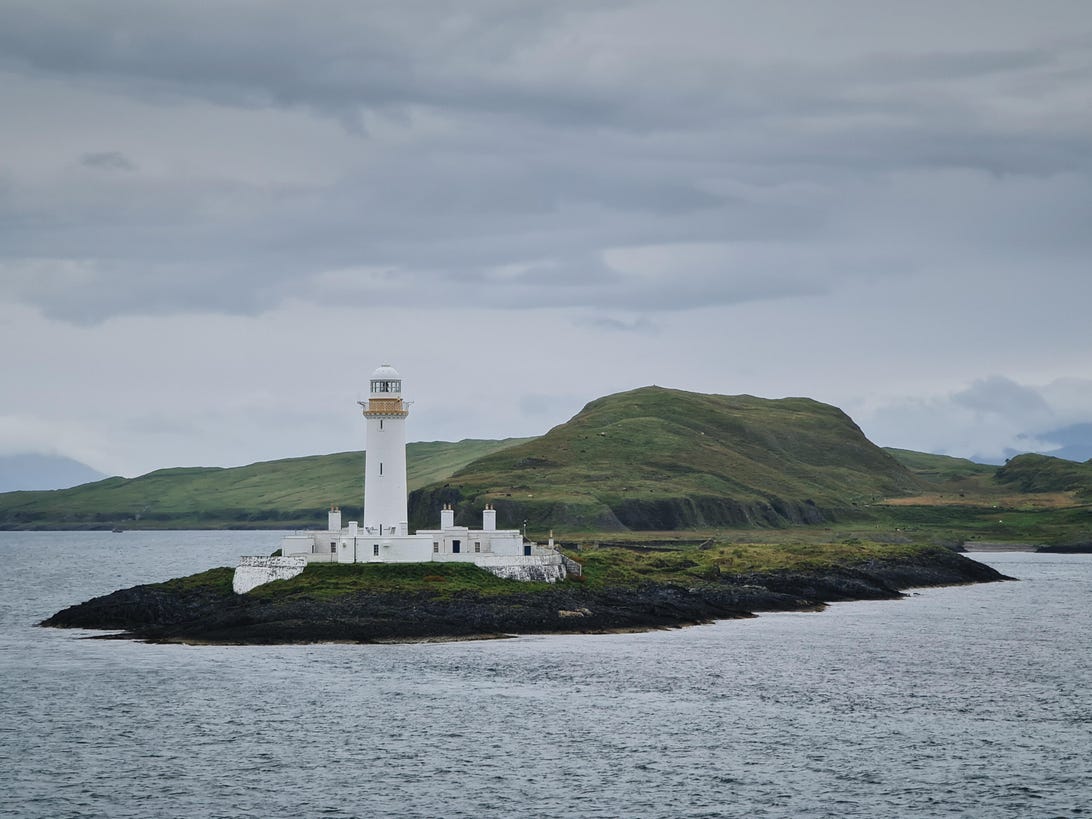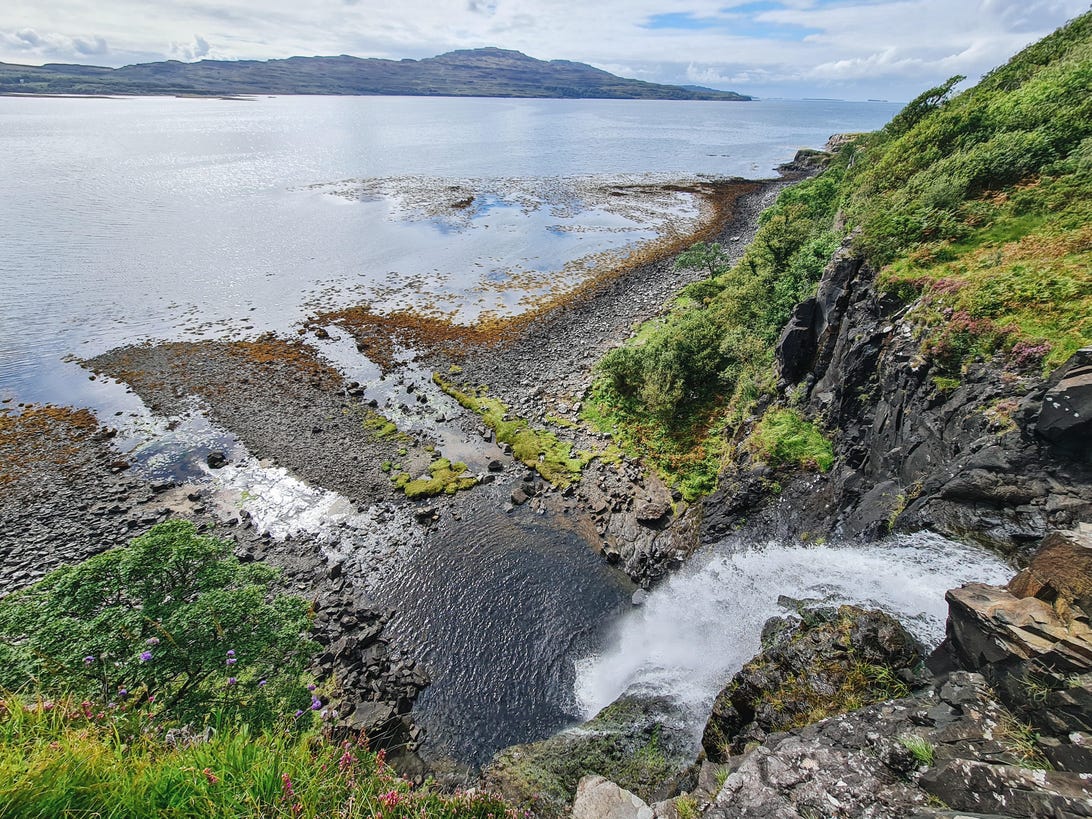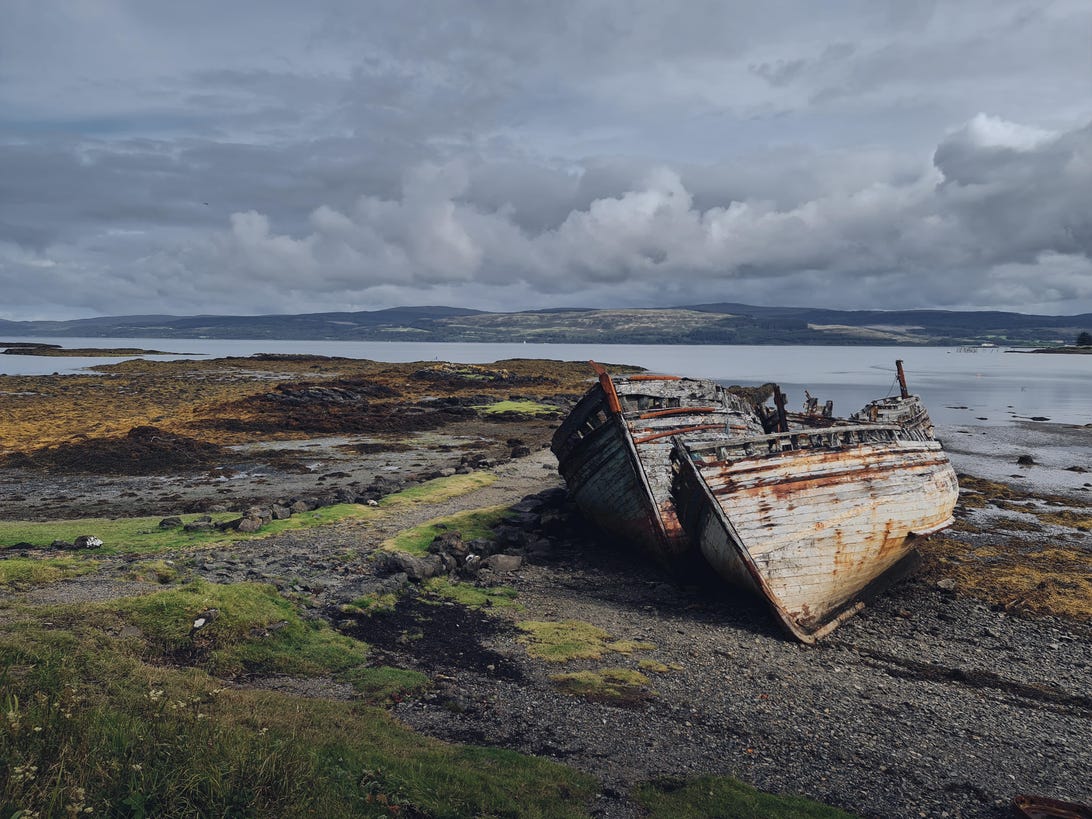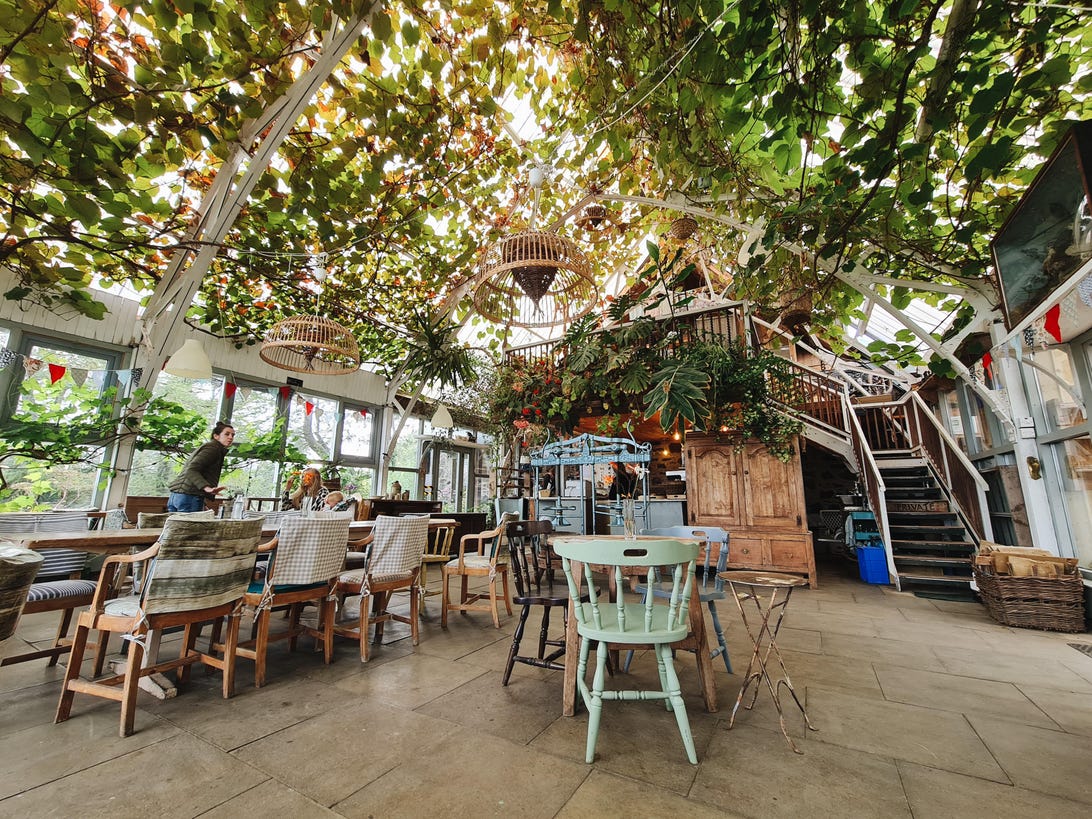
The Galaxy Note 20 Ultra may not be Samsung’s latest, greatest handset — that honor goes to the amazing Galaxy S21 Ultra — but it’s packed with some top tech, a big screen and a brilliant camera. That all makes it a superb handset to capture the glorious, remote landscape of a road trip around the Scottish island of Mull.
Read more: How the iPhone 12 Pro’s camera compares to the Note 20 Ultra
Here’s what I liked about the phone.
Awesome 5x zoom
It’s a given that the Note 20 should be able to take cracking photos in its standard zoom mode. And it does — they’re bright and vibrant and packed with detail. But it’s the zoom skills that I really loved on my trip. The 5x optical zoom let me get wildly different compositions in my images that are simply out of range of the 2x zoom on the iPhone 11 Pro I also had with me.


Taken from the ferry going to Mull, I was able to use the 5x zoom to get a great shot of this lighthouse.
Andrew Hoyle/CNETIt’s great for landscape photography. Instead of just taking a wide-angle shot of everything in a scene, I could zoom in and focus on certain elements, capturing a more intimate shot. The images themselves are pin-sharp, too, and it works superbly for video.
I shot a video diary of my time in Mull, explaining where I went and what I look for in my landscape photography. Every bit of footage in it was shot on the Note 20 (mostly in 4K resolution) and it was the zoom skills that elevated my shots to a more cinematic level than I may otherwise have gotten. Which brings me on to…
Stabilized shots, even when zoomed
Zooming in on a DSLR with a long lens normally means a lot of shaky shots, and usually requires a sturdy tripod. The Note 20’s improved optical image stabilization worked well however, smoothing out any shaking from my hands, and being so smooth when I filmed as I was walking that it looked like it was shot using a stabilizing gimbal.


Using the super-wide lens, I was able to capture this dramatic shot of the Eas Fors waterfall cascading into the ocean.
Andrew Hoyle/CNETIt’s a huge help when you’re shooting zoomed in, when any shaking will be even more noticeable. Here though, the phone was able to lock onto objects in a scene and keep them locked in frame. There were a few scenes in my video where it struggled a little — usually when there isn’t an obvious point to “lock on” to — but the footage was easily stabilized digitally in Adobe Premiere Pro.
Massive display
The sheer size of the 6.9-inch display on the Note 20 makes it brilliant for shooting photos and video as it’s so easy to compose your shots. It’s bright too, meaning it was easy to see even under the bright sunshine I had for a few moments on my trip.


My ride for the trip: the Jeep Wrangler Rubicon, with a TentBox pop-up tent on top. Great fun, and a beautiful shot from the phone.
Andrew Hoyle/CNETIt’s also a big benefit when it comes to editing my images, as it’s far easier to change sliders in Adobe Lightroom Mobile on a bigger screen. I edited shots taken both from the phone itself, and ones I’d imported from my Canon 5D MkIV, and while I’d also taken my 12.9-inch iPad Pro ($947 at Amazon) for editing, I found it easier to just sit back with the Note 20.
It also made watching downloaded Netflix shows much more enjoyable while I was brewing my morning coffee on an MSR camping stove.
S Pen makes image editing a dream
It was also during the editing that I really found use of the S Pen. Adjusting small sliders in Lightroom can be done more accurately using the fine tip of the stylus, rather than jabbing with a finger. It’s also far easier to “paint” in effects, such as selectively lightening or darkening parts of an image, using the stylus in much the same way I would use my professional Wacom graphics tablet at home.


Using the stylus for more accuracy, I was able to paint in more light on these old boats to help them stand out from the scene.
Andrew Hoyle/CNETThe downside is that it’s tiny and if you don’t push it back into the slot on the bottom of the phone, you’re almost guaranteed to lose it. On one occasion it managed to escape and fall down the side of the driver’s seat of the Jeep Wrangler I’d borrowed for the trip. I didn’t notice at first and it took some time for me to fish it out. From then on I made sure it was also fully clicked back inside before putting the phone away.
It’s tougher than it looks
The glass back and soft gold color of the phone makes it look like a bit of a poser’s phone. Something that looks luxurious sitting on the table of a nice cocktail bar, but wouldn’t put up with much abuse. In fact, it’s a lot more robust than it looks. It took at least three tumbles to the ground — one of which was onto a rocky pathway, and neither the display nor the glass back showed any cracks.


The super-wide lens played a corker here, capturing a gorgeous shot in this conservatory-cafe, despite the mixed lighting conditions.
Andrew Hoyle/CNETThe factory-installed screen protector is heavily marked from the abuse it received, but the display itself is perfect and a replacement protector would make the phone look as new. The IP68 rating also meant that it had no problem keeping the water out on the many times I shot footage in the rain, or being regularly drenched in water as I took a small boat trip out to the tiny island of Staffa.
I’m surprised at how well this phone withstood the demands of my island adventure, particularly as it wasn’t even in a case, which it most certainly would have been had I have spent my own money on it.
It wasn’t all upside, though. Here’s what I didn’t like about the Note 20 Ultra.
Battery life could be better
Using the phone to shoot a lot of 4K video footage with the screen brightness on max is an immense drain on power. But still, I was surprised at how quickly the phone seemed to suck away the juice, requiring a recharge from a mobile power pack in the midafternoon, despite having been fully charged at 9 a.m. that same day.


Another success with the 5x zoom lens, this time being used to frame a pretty composition with the colourful houses in the harbour of Tobermory.
I found myself having to be more and more sparing of when I used it and kept it in airplane mode to ensure that power wasn’t being needlessly squandered on searching for nonexistent cellular signal (Mull is something of a blackspot, signal-wise).
Video microphones pick up wind noise
Being quite an exposed island in the Atlantic ocean, it’s no surprise that the island can get very windy. I recorded my video using only the built-in mic and intentionally didn’t use an external microphone with wind-shield to see how it performs. In extremely strong winds I didn’t even bother trying to record myself talking on camera as any microphone would have failed.
But even when the wind seemed gentle, many of my clips still suffered from wind noise. As a result, I recorded most of the dialogue in my film as voiceover at home, with only a few of the less-affected shots left in. You can still hear wind noise in the film though and it’s a shame that some of the clips I shot had to be completely discarded.
If you want to use the Note 20 as a vlogging camera, make sure you invest in a microphone that can plug into the USB-C port.























